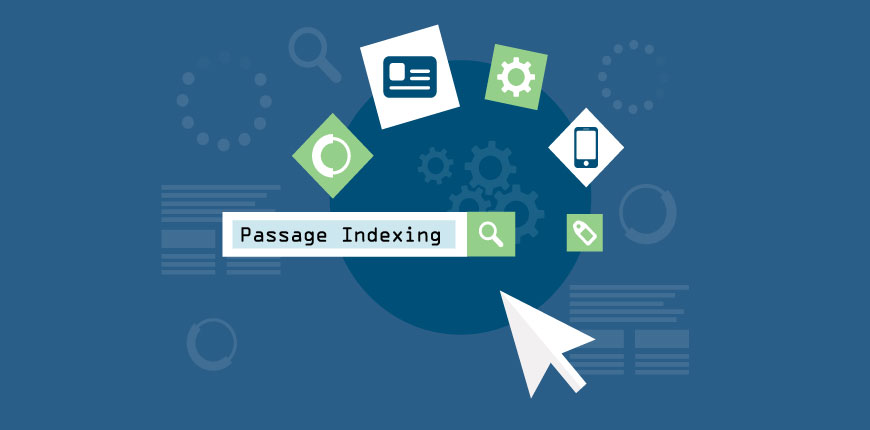“Search” is to try to find something by looking or otherwise seeking carefully and thoroughly. It’s going to be a never-ending odyssey. A search engine will not stop improving the way they get their results to you in a way making more sense, more “semantic” for them and for you.
That’s why on October 15, 2020, during their Search On 2020 event, Prabhakar Raghavan – Google’s Senior Vice President, Head of Search – announced ways to propose a better search engine using AI improvements, to make results more relevant and semantic to users’ search intent.
One of them is called “passage indexing”, a new method to rank your website on SERPs based on semantic use of words in content passages. This article will guide you through the history of semantic search and Google’s algorithm so in some way we can help you out in optimizing your website more “semantically” in order to increase your rank and get more traffic.

I – There’s always a need for semantic search
Table of Contents
1. How Google returns search results in the past
In the past, when searching, Google would rely solely on keywords to provide results. Whoever searches for that keyword gets the same results.
Of course, this can also happen now if Google doesn’t have enough data. For example, when I type “big bang” in the search box, I get mixed results. It could be about the big bang theory of the universe, or it could be a Korean music band.
This sometimes could provide unrelated information with the user’s search intent. On the 1st page of SERPs, there are narrowly 10 results. As a matter of fact, we want to see the most relevant results to our search intent. But at that time, Google cannot understand us, and it returns everything it can get on the Internet.
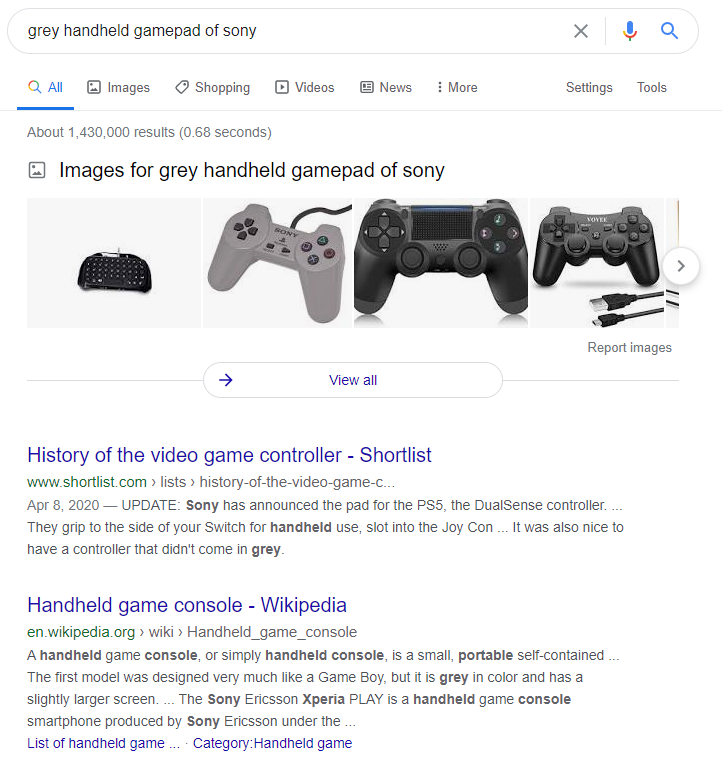
I used extensions to simulate old search results and
here is when I searched for “grey handheld gamepad of Sony”…
2. How Google returns search results now
Nowadays, when I try to click on some links about that aforementioned music band, read some lines about them, and then I search again with that “big bang” keyword, I see only results about Big Bang, a K-Pop band.
That phenomenon is called “semantic search”.
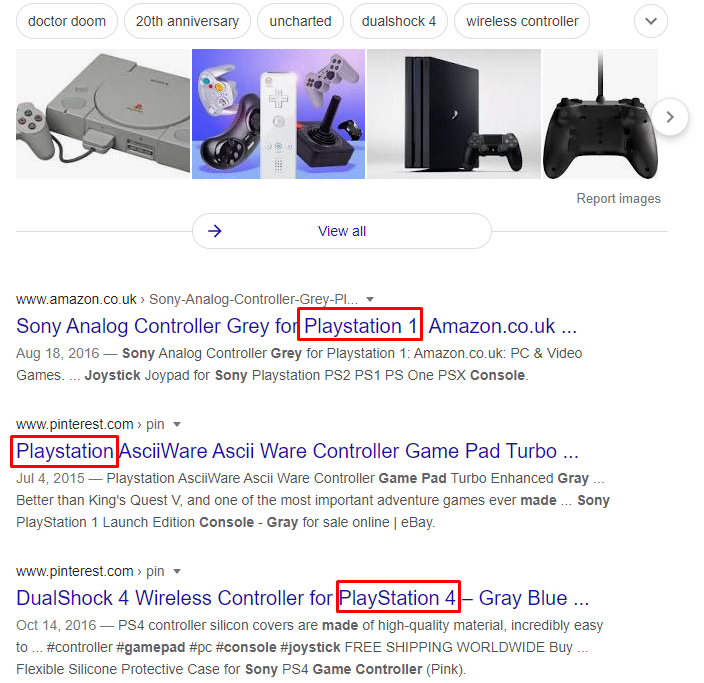
but now look at those snippets.
Semantic search was born to respond to everything searchers are considering or learning every day. From whether to buy product X, concepts and issues around the topic Y to simply finding a place to eat Z …
Google is the source of the information flow of the entire global Internet connection with 52 billion searches per month and holds 86.86 percent market share of the search industry (07/2020).
Because of that, the never-changing task of an SEO professional is how to make the content of the page best match the user’s search query. But now search queries tend to be longer and more specific. In order to satisfy the most possible users, Google always tends to adopt newer and more effective search algorithms.
With that thought in mind, throughout its history, Google has introduced many algorithms that try to collect, connect datas, analyze and understand them, to make search results more semantic to users’ intent. Before passage indexing, there are 3 major key steps in this game of interpretation.
- Google Knowledge Graph: gather and connect datas of web entities
- Google Hummingbird: focus on meaning of keywords
- BERT: further extend the acknowledging of words in nuance context
- Passage indexing: (now with capability of recognize semantic contexts) crawl words on paragraph level to bring more suited results to users, which affects web ranking
Google Knowledge Graph
The Knowledge Graph is a knowledge base used by Google and Google services to enhance search engine results with information gathered from a variety of sources. Information is presented to the user in the information box next to the search results.
Knowledge Graph information blocks were added to Google’s search engine in May 2012, in the United States, and internationally later in the year. The Knowledge Graph is provided in part by Freebase. Information covered by the Knowledge Graph has increased significantly following its launch.
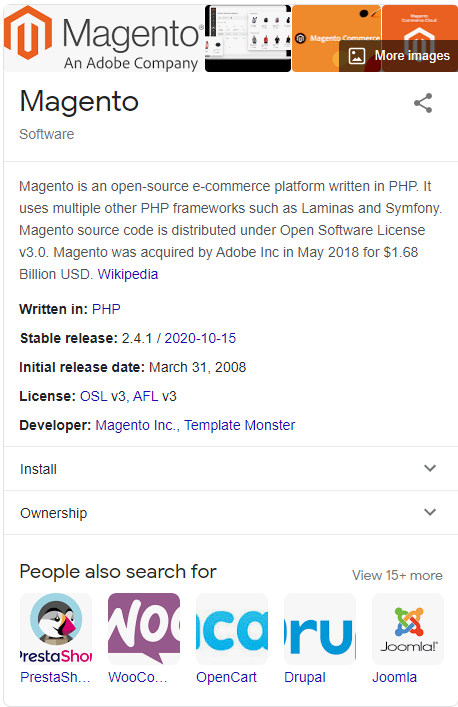
During that time, this “thing” is called knowledge graph info block
Google was trying to give people the correct answers to all of their questions. To do that, it doesn’t just give the best match for the search term. It also by creating wider connections between data.
Google collects and analyzes huge amounts of data about people, places, things and events. It collects from all possible sources: Wikipedia, web crawling, structured data, Google My Business. These datas will then be aggregated for presentation in an accessible way and are usually rich results, like featured snippets, slider image or knowledge graph tag said above.
Google Hummingbird
Google Hummingbird was announced on September 26, 2013 but was applied right from August 20, 2013.
The introduction of Hummingbird aimed at dealing with and understanding primarily the impact of keyword semantics. That means it will focus on the meaning of that keyword, preferring related keyword phrases.
The most used purpose is to target individual keywords AND related sentences rather than a few single keywords.

Hummingbird signals Google’s commitment to understanding a searcher’s query intent. Those are the right goals for them to give more consistent results. This algorithm update is largely understood to have a positive effect on the accuracy of Google Knowledge Graph.
So we can all now affirm that semantic search has started with Google Hummingbird in 2013. But how can semantic search be related to passage indexing, more specifically to website ranking in SERPs?
Here comes the birth of BERT algorithm
As we conclude above, the semantic search process is simply understood that when someone enters a question and searches for it with Google – whether by text or voice – the semantic search determines the user’s intent to produce results. The algorithm based on 4 main factors:
- User context
- Natural Language Processing
- Query stream context
- Entity identification
You see, the human language is very complicated and polysemantic. After several years, Google Hummingbird algorithm proves that it is still not enough to catch up with the development of society, thus the development of language, which generates so many search contexts in search engines like Google.
So as to keep improving its search quality, Google continues to introduce the BERT (Bidirectional Encoder Representations from Transformers) algorithm. It is a deep-learning algorithm that deals with natural language processing (one of four factors mentioned above). It helps a machine to understand what words in a sentence mean, but with all the nuances of the context and polysemous terms. The original change only affected 10% of the English search queries as well as featured snippets in some regions.

The BERT algorithm helped Google to understand more and more about its users’ search intent in order to return the most relevant possible results. It improves further semantic search activities of users and become a base for other algorithms featuring ranking, indexing that directly influence companies’ SEO activities. One of them is called “passage indexing”.
II – Google Passage Indexing: it looks very similar to Featured Snippets
1. A review on feature snippets
A featured snippet is the featured search results on Google’s organic search results page, placed in a certain box, including a summary. The answer is extracted from a web page with a link to the page, title and page URL.
Featured snippets aim to answer users’ questions immediately (therefore, also called “answer boxes”. “Featured” means that a snippet will stand out more on the top list of search results.
There are 3 main types of featured snippets:
- Paragraph: Can be a box with text inside or a box with both text and images. This is also the most popular featured snippet.
- List: Answers are displayed in the form of a list.
- Table: Answers are given in table form.
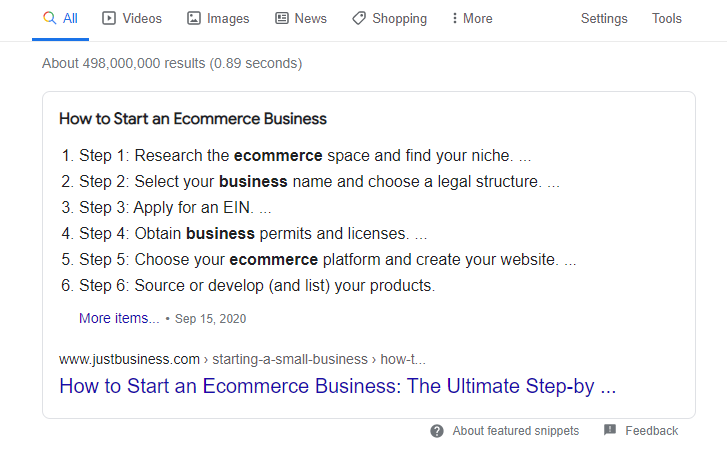
Want to know more about snippets? DON’T MISS our detailed article on rich snippets here.
2. What is the nature of the term “passage indexing”
As mentioned in the introduction, Google announced that it will integrate more artificial intelligence into its search algorithm. This will improve visual search and work on 3D search. For organic search results, Google now focuses on passages (or paragraphs). Google will rely on the relevance of the paragraphs to show search results on the search page.
That’s for “passage”. But what about “indexing”. Are there any changes to Google bot? This is the most tricky part. Passage indexing is NOT about indexing. It talks about ranking.
Google still crawls and indexes the entire web page but is now storing and retrieving information in paragraphs. It is possible to rank a web page based on a small element.
Because of this change, Google will give preference to some pages with lower rankings or pages of less relevance if there is a paragraph on that page that does well in answering the query. For different websites, Google will compare paragraphs against each other for ranking. However, it only impacts queries that search for specific answers and should work in 2021.

Look at that snippet. Google highlights words that are NOT in search queries cause it recognizes users’ real search intent which is diabetes symptoms
3. Passage indexing vs Featured snippets
Google is constantly working to find the best answer to the search query within the Web page then put this piece of content on the front page of search results (SERPs). The above change is like an extension of the Google featured snippet. So what is the difference between Google featured snippet and Google passage indexing?
First, you need to know that Google will locate different parts, sections and passages within the document. Next it will try to find the best answer for each search query then use these paragraphs to create an “answer box”. This change tends to improve the ability to define paragraphs to become a featured snippet.
The major differences between featured snippets and passage indexing are:
- Featured snippets select the source based on the relevance of the entire web site to the question.
- Passage indexing is based on each passage. Google then looks at the relevance of individual paragraphs.
- But in both cases, Google needs to locate the best paragraphs. Therefore, you should keep the internal web optimization tactics intact.
4. What changes will the passage indexing feature cause?
What are the changes caused by Google passage indexing? And what do you need to do to keep your website growing?
The trend of “1 page 1 topic” can gradually lose influence
Usually, you can utilize a page to cover a specific topic. So, in the past to rank higher, many SEOers deploy content models that assign a topic to a page, many topics, many pages.
But as with passage indexing, there is no need for a separate page for a question or definition, especially for structured websites. They are built in a way that favors not only users but also search engines, because just a small paragraph in the article with the answer or definition is enough. If they are related to the user’s search query, that page will be given higher priority to be displayed.

An article can be “On Top” for multiple queries
Articles containing relevant paragraphs can rank for many different queries.
When Google can better identify and understand relevant paragraphs, it will increase the number of impressions of this particular snippet in search results more times. If the number of snippets goes up, it means that any URL that contains them can be at the top of the 1st SERP.
Thus, just building a good article containing relevant paragraphs can rank for many different queries.
III – 3 things Magento store-owners need to do with passage indexing update?
1. Optimize topics and answers in your contents
You must catch up with trending topics. Use social listening and content discovery tools to know what is rising up and what is going down. Therefore, by distributing answers to some hottest questions in your content passages, it is easier to rank up on SERPs. I can suggest you some assistance tools below
- Google Trends, of course
- BuzzSumo:
- Provides 30 days trial
- Includes a keyword research tool
- Access real-time viewing of viral trends for any subject, domain or place.
- Suggests topic cloud and content example
- Crawls forum posts, social media and e-commerce sites for questions
- Google’s People Also Ask box: this is the easiest way to notice related topics and questions
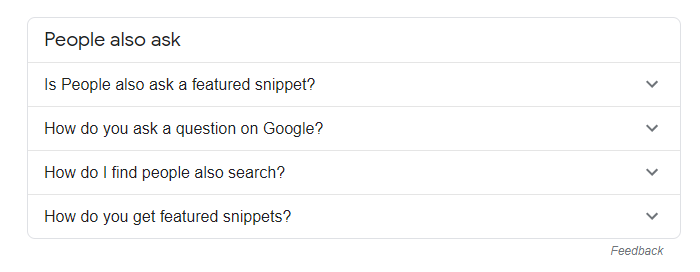
2. “One post many questions” and answer each question clearly
You can focus on long articles that answer several questions related closely to each other, an answer is encapsulated in one passage. This tactic also results in higher retention because it makes the post better structured and easier to read.
Tip:
- Ask questions in the post (use the question as a subheading).
- Immediately write an answer passage directly below the question.
- Give more details or explain more in-depth to the answers in the rest of the article section
3. Make sure one answer can reply many of the same questions
Similar to how featured snippets can appear on SERPs of different questions, this means that your page’s rank can be raised just by containing the answers to many related questions.
Google is very good at identifying similar or related questions, so you need to create articles that can solve such problems. You can use synonyms, twist the phrases, make your passage more valuable by expanding the range of your answer a little bit. This is an extremely smart tactic that you should not ignore.
CHECK OUT other Google’s core updates in mid-2020 to further protect your SEO right now.
Wrap up
Google is constantly improving search results, and you need to keep an eye on changes regularly to adjust your strategies for the best fit. This passage indexing update actually is not too hard to understand and go along with. The key here is still to provide really useful content with a wealth of information, but now more structured.
Once you know what Google passage indexing is, you should focus on giving helpful answers. In addition, creating content including questions and related topics will greatly help personal websites in particular and business websites in general.
BSS Commerce is one of the leading Magento extension providers and web development services in the world.
With experienced and certified Magento developers, we commit to bring high-quality products and services to optimize your business effectively. Furthermore, we offer FREE Installation – FREE 1-year Support and FREE Lifetime Update for every Magento extension.
CONTACT NOW to let us know your problems. We are willing to support you every time.
